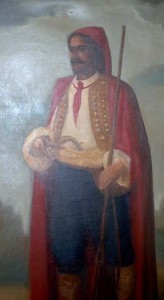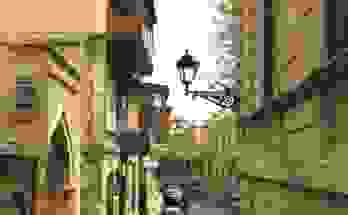Chances are that if you’ve ever heard of Croatia, it was in the context of atrocious warfare. Some of the bloodiest conflict since the end of World War II was waged in the Balkan region during the breakup of the former Yugoslavia, and the scars, both physical and psychological, have yet to fully heal.
But for anyone who’s actually visited Croatia, it’s a sun-drenched coastal paradise of exquisite medieval architecture, thousands of dreamy island getaways, and some of the best wine on the planet. Sadly, such magnificence does not often make the evening news.
The picturesque secret has gotten out, through ever-more-successful tourism year after year, and, more recently, due to certain fantasy-related television programs that we’ll get to in a minute.
So, though you may not have heard about it, Croatia is a far more fascinating and welcoming place than its torrential history would have you believe, and it has no shortage of fun activities or cultural wonders to appreciate. It’s a great place to visit, and, as we’ll see, it has a few quirky claims to fame, some of which you might even use, each and every day. Let’s get to it.
10 fun facts about Croatia you’d never have guessed
1) Croatia invented the necktie

However you may feel about the modern-day office noose, we have Croatia to thank for it, and it may very well be Croatia’s must successful export. After all, it used to be called the cravat, and where did the word cravat come from? Croat.
The origins of the necktie go all the way back to the 17th century, when Croatian mercenaries fought for the French in the Thirty Years’ War, bringing their distinctively knotted neckwear along with them.
From there it spread to other militaries, other countries, and, eventually, into the cubicles of modern-day offices and other fancy places. The knotting became distinctive enough that it simply became known as a tie, and here we are today.
But hey, it’s not all bad. If it weren’t for Croatian soldiers popularizing the necktie, we might all still be stuck with the Spanish ruff. We owe you one, Croatia.
2) It’s home to the “world’s most beautiful sunset”

…according to Alfred Hitchcock, anyway. But the man certainly had a sense of the cinematically magnificent, and Zadar is the city he claimed had the best.
During a visit in 1964, he filmed the sunset, and made it world famous. Though the city itself also has its fair share of attractions, there’s no doubt the sunset will capture the attention as well.
Is it official? No. Are there plenty of pretty sunsets elsewhere? Sure. Did Hitchcock travel to each and every point on the planet to determine with irrefutable evidence the accuracy of his claim? Certainly not.
But it’s pretty great anyway, and definitely worth running from one end of the city to another to get a photo in time. Like I did.
3) It’s home to King’s Landing (sort of)

You’re probably far more familiar with Croatia than you may have realized, and we have Game of Thrones to thank for it. Though the show has taken viewers all over the world, seasons 2 and 3 showcased Croatia’s most famous city, the walled seaside fortress of Dubrovnik, which was chosen as King’s Landing.
It takes just a brief stroll through Dubrovnik to see why. Its stone buildings, medieval architecture, pedestrian streets, walled fortifications, and utter lack of modern-day billboards could not have provided a more perfect setting for the capital city of a fantasy kingdom. While other castle towns have been invaded with fancy hotels, Dubrovnik remains a time capsule to a far cooler era.
Filming has since expanded to other Croatian cities, including Split, which is home to a Roman emperor’s retirement palace. You’d have a hard time finding a better place than Croatia for capturing medieval magnificence, and although a few CGI castles were added to the background in a few places, visiting Dubrovnik is every bit as good as everyone says.
Incidentally, it wasn’t always Croatia that was going to be home to King’s Landing. The first season actually placed King’s Landing in Malta.
4) It has the highest number of UNESCO Intangible Goods of any European country (in a tie with Spain)

Though UNESCO is best known for compiling a list of World Heritage Sites, which tend to be architectural marvels of worldwide renown, its Intangible Cultural Heritage List collects the more ethereal of humanity’s traditions, with everything from music, crafts, festivals, cuisine, and other customs considered for inclusion.
And on a continent replete with cultural marvels of all sorts, Croatia stands in first place among European countries, tied with Spain, at 14, as of the year 2014. Crafts such as lacemaking, gingerbread baking, and wooden toy carving stand alongside festivals and singing traditions as part of Croatia’s intangible cultural heritage, while France is sitting there with a measly 12. China’s beating everyone, though, at 38.
The Intangible Cultural Heritage List is relatively new, so it’s quite likely that this situation may change, but it’s an indication of Croatia’s rich history, whose traditions are lesser known in the West than perhaps they deserve.
Check out the full UNESCO list, as it’s likely to evolve rapidly in the near future.
5) It’s home to the world’s smallest town

Over in Croatia’s northwest, you’ll find the quiet town of Hum, a sleepy hamlet of cobblestone streets, and…that’s about it.
And although you wouldn’t expect such bucolic modesty to be in possession of a world record, Hum is officially the world’s smallest town, with a population that has varied between 17 and 23.
That’s quite a swell by percentages, though. Residents must have felt like there town was hitting the big time.
It certainly can’t be described as an “exciting” place to visit, but quiet serenity is always a good time.
Full disclosure: The town claims itself as holding the Guinness World Record for the world’s smallest town, but I wasn’t able to find this title on the Guinness World Records official site. Clarifications welcome.
6) The location of dalmatians is Croatian

If you read about Croatia for a while, you’ll eventually find out that its waterfront is known as the Dalmatian Coast, and yes, that’s where the dog got its name.
Thanks to the breed’s worldwide renown, courtesy of the 101 Dalmatians books and movies, one might make the mistake of thinking the coast is named after the dog, but the region has been known as Dalmatia since imperial Roman times.
Though most of the breeding of the dotted canine took place in England, where it was documented and popularized starting in the 19th century, its origins have been officially recognized as Croatian, based on illustrations and other references dating all the way back to the 17th century.
Though it has been said that Dalmatians served as guard dogs or companions to nomadic Croatian tribes, references before that date are rather spotty.
7) Their money is named after a rodent

…though as far as rodents go, it’s pretty darn adorable.
The Croatian currency is the kuna, which is the Croatian word for the marten, a ferret-like little bastard prized for its luxurious fur.
Trappers traded the furs widely enough that, much like the U.S. Dollar being nicknamed the buck, the furs became practically synonymous with money itself.
The kuna has only been the currency of Croatia since 1994, succeeding the Yugoslav Dinar after the breakup of Yugoslavia, and since Croatia is taking steps to join the Euro, it’s likely this fuzzy little guy won’t be the term for Croatian currency furever.
Oh, and the coins…
8) Their coins are named after a lime tree

So it’s rather unusual to name your money after a fuzzy little weasel-like critter, but Croatia went a step further and named its coins after a plant.
The kuna is divided into 100 lipa, which is the Croatian name of the linden lime tree.
So they’ve got the plant and animal kingdoms covered in their currency. I wonder if they refer to stocks and bonds as prokaryotes or something.
And maybe loans can be named after minerals of some sort. It wouldn’t even be that much of a stretch, since shiny rocks have been used as currency since…basically forever.
But, once again, this particular name may disappear, if the Euro spreads to Croatia.
9) Um…it makes a lot of inaccurate claims

So in researching this article, I came across a number of lofty achievements, stated rather frequently on Croatian sites related to the tourism industry, which have plenty of reason to share Croatia’s most interesting facts with prospective visitors.
Unfortunately, plenty of them turned out to be somewhat inaccurate, or just plain not true. It’s a little weird, and I’m sure plenty of other countries have done the same thing, but they seemed to show up over and over again for Croatia in particular. Oh well.
So I could have skipped this section altogether, but I felt the need to provide some clarification on some of these details.
Among Croatia’s not-so-accurate claims to fame are the following:
- Some claim that the world’s smallest cathedral is the Church of the Holy Cross at Nin, even though the Guinness World Record belongs to a cathedral in Missouri.
- The island of Hvar is said to be home to the world’s oldest public theater, dating back to 1612, which is just ridiculous, considering the 3,000 year old Greek theaters speckled all over the region. Maybe they mean the oldest continuously operating theater, but it’s generally not specified as such.
- Numerous claims point to the world’s first hydroelectric power plant being Iskrice, near Šibenik, dating back to 1895, even though the original power plant operating along Niagara falls started producing electricity all the way back in 1875, though it has since been replaced.
- It has been said that the first country to officially recognize the United States as an independent country was Dubrovnik, which was itself an independent country at the time, even though Morocco is generally regarded as having made this declaration first.
- Numerous sources claim that the stones used to build the White House in Washington D.C. came from the Croatian island of Brač, though other sources claim it came from Virginia; some say it was just the columns, while others claim it was only a few mantlepieces added during early 20th century renovations. The debate rages on.
- Many claim that Marco Polo was born on the island of Korčula, which was part of the Republic of Venice at the time of his birth in 1254, though the exact location of his birth remains a matter of dispute, without much evidence to back up the claims.
- Croatia claims to be the birthplace of the parachute, allegedly invented by Fausto Veranzio, who was born in Šibenik. He wasn’t the first person to draw up a diagram for a parachute, since Leonardo da Vinci beat him to it (and earlier diagrams existed before him, too), but it’s widely believed that he was the first to build and successfully test a parachute, in 1617…if the stories are true. But even so, the alleged jump supposedly took place in Venice, well outside of Croatia’s territory, if it ever happened at all.
I certainly don’t mean to single out Croatia as being a hotbed of lofty but unsubstantiated claims, as inaccuracies turn up all over the place, but there seem to be quite a few of them, and one must give credit only where credit is due. And besides, almost inventing the parachute could only have motivated everyone else to get to work doing so.
There’s some minor consolation, however, as Croatia does in fact hold the claim for something exquisitely delicious…
10) It’s the home of the world’s biggest truffle

And yes, it’s official. The record-holding truffle was discovered by Giancarlo Zigante, in 1999…or, more accurately, by his dog, Diana.
The nearly-football-sized truffle weighed in at 1.31 kg (2 lbs, 8 oz), and was valued at about $5,000 at the time. Quite a hefty sum for what is essentially a massive globule of mold, but hey, truffles are pretty great.
Since then, heavier truffles have been discovered, and have sold for vastly greater sums of money (one sold in 2007 for $330,000), due to inflation and higher demand, but the Croatian truffle still holds the title of world’s largest.
A final Croatian citation
You know what else is interesting about Croatia? It’s not called Croatia in Croatian. It’s called Hrvatska. Despite sounding nothing alike, these words are actually a case of divergent evolution, from common terminology that kind of sounded like both, like a millennia-long linguistic game of telephone.
And dammit, now I just want to go back there. Off to daydreamy planning stages I go.




CROÁCIA IS VERY BEAUTIFULLLLLL…..
Cool stuff… for you maybe interesting fact that small town of Ston, near Dubrovnik has 2nd longest stone wall in the world after Great Wall in China…
https://en.wikipedia.org/wiki/Walls_of_Ston
thanks for that, i’m doing this project about croatia and we need some fun facts ((:
Croatia is land where is real Homeric Troy posted,also Homeric Ithaca is located on Croatian island Unije.The birthplace of Homers epic is the Adriatic coast what means-Croatia.